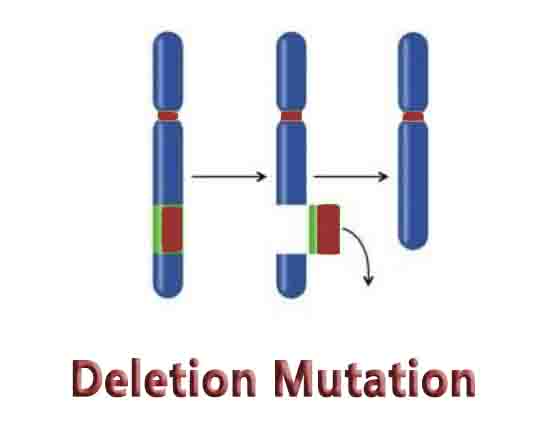Deletion Mutation Definition
A deletion mutation occurs when nucleotides are removed from the genome during DNA replication. Deletion mutations can remove a single nucleotide, or entire sequences of nucleotides. DNA deletions occur when the enzyme that synthesizes new DNA slips on the template DNA strand, effectively missing a nucleotide.
For DNA replication to occur, polymerase must attach template nucleotides to its active site. In meiosis, larger strands of DNA can undergo deletion mutations during crossing-over. Large sections of DNA may be mutated if the segments of DNA exchanged are not the same size.
There are two types of deletion mutations: serious mutations and harmless mutations. Depending on where the deletion mutation occurs in the gene and how many nucleotides are deleted, the effect of the deletion mutation will vary. Protein-producing enzymes read the genetic code in triplets. It is possible for entire amino acids to be lost from the protein created by losing three or more nucleotides in a gene.
This can have serious effects on the protein’s function. It is often not better to lose a single nucleotide, since frameshift mutations can occur. In a frameshift mutation, the entire gene is shifted, and all the original triplet codons are changed. The mutation of this type can cause a gene to produce a completely non-functional gene, since it seriously alters the amino acid chain it produces.
Deletions may occur more often than we can measure, but inherited mutations are rare. Asexually reproducing animals have relatively low mutation rates. It is partly due to the specificity and accuracy of polymerase.
The cell also contains another enzyme, exonuclease, which follows polymerase and removes sections of DNA that do not match their nucleotide counterpart on the template. It is rare for deletion mutations to cause phenotypic changes as a result of this and other regulatory mechanisms.
Examples of Deletion Mutation
A Simple Mutation
The following is an example of a single nucleotide deletion mutation. The short sequences of DNA are not representative of actual DNA, which contains many hundreds or thousands of base pairs.
The top string represents the original strand of DNA, while the bottom strand lacks the nucleotide pair removed by the deletion mutation. The triplet codons are separated, to see the effects of the deletion mutation.
5’ TAC CCA GGG 3’
3’ ATG GGT CCC 5’
5’ TAC CCA GG 3’
3’ ATG GGT CC 5’
This will cause the deleted nucleotide to be filled by shifting the DNA and causing a frameshift mutation, or inserting a new nucleotide in a mutation known as an insertion. This mutation can only be passed on if the organism’s mechanisms for repairing DNA do not catch the mistake, and the DNA exists in a cell that will produce offspring.
In asexual organisms, this is every cell and mutations are more likely to persist. In sexually reproducing organisms, mutations can only be passed on if they arise in the gamete producing tissues of the sex organs.
Discovering the Genetic Code
Before the 1950s, the nature of the genetic code was not well understood. That all changed when Francis Crick and Sydney Brenner began experimenting on mutant strain of bacterial virus. Crick and Brenner analyzed the DNA of viruses that were exposed to a toxin known to cause mutations.
During their trials, the noticed that the function of certain genes could be restored by a combination of mutations, which we know now to insertion and deletion mutations. While the DNA between the two mutations would become nonsense, the insertion would offset the deletion. This would reset the reading frame of the gene, and cause a frameshift mutation to be avoided.
This interaction between mutations was termed intragenic suppression. By comparing how individual mutations affected the proteins and amino acids produced, Crick and Brenner were able to formally theorize about existence of the triplet genetic code, and its universal use in organisms.
Related Biology Terms
- Substitution – When the wrong nucleotide is copied during DNA replication.
- Insertion – Instead of deleting nucleotides, an insertion mutation adds nucleotides to a genome.
- Inversion – A segment of DNA becomes rotated 180 degrees within the gene.
- Reciprocal Translocation – Two different chromosomes (non-homologous) exchange pieces of DNA.

